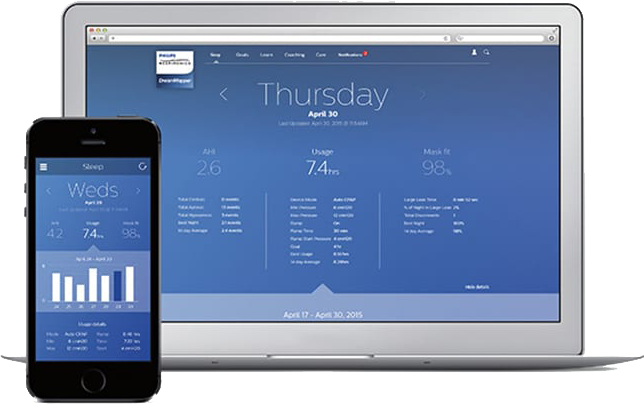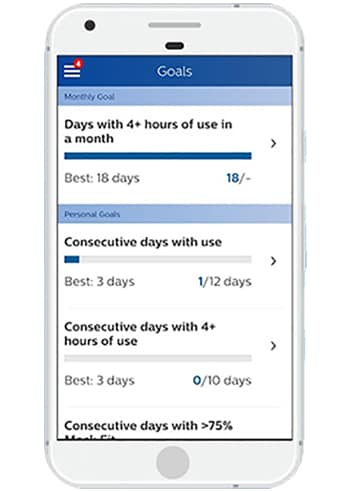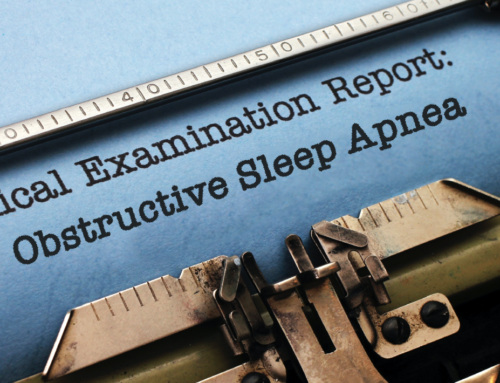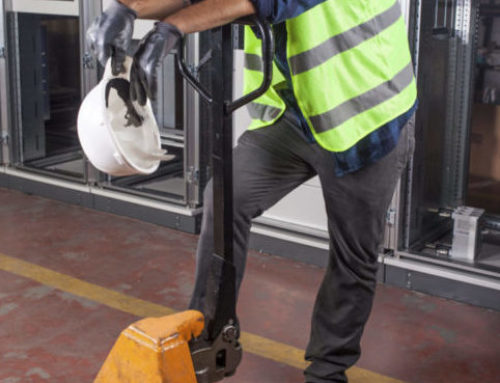
Philips DreamMapper personalized tracker tool keeps the sleep apnea sufferer informed, connected to their provider and able to track their progress and stay committed.
Compliance, Adherence–Potato, Potato…Doing it is What is Important!
PAP Therapy for Sleep Apnea can be extremely effective… but only if it’s being used.
Merriam Webster defines Compliance as “the act or process of complying to a desire, demand, proposal, or regimen or to coercion.” Who picked this word to be the everyday term for judging one’s therapeutic efficacy of Sleep Apnea Therapy? As if strapping on a mask apparatus to your face before falling in bed each night wasn’t enough, now we have a negative sounding term applied to one’s achievement of better-quality, therapeutic sleep. Some sleep professionals use Adherence defined by Webster as “commitment to a cause, person or belief”. This sounds much better to me. For instance, “My CPAP Adherence is 90% because I am committed to my health, I like feeling better and I believe the science and data that says wearing my PAP is good for me, my heart, and I hear it even my helps my brain.” Never the less, CPAP (continuous positive air pressure) and or today’s modern APAP (auto-titrating positive air pressure) therapies all have fallen under the jurisdiction of compliance reporting.
If your health plan is paying for the device or a portion after most folk’s high deductibles, they now require as does CMS Medicare some reporting of minimal usage. 4 hours or more 70% is the standard compliance suggestion now in order for one to have assistance in paying for the device. Some employers in high-risk occupations such as pilots, heavy construction, train operators and commercial truck drivers may be required to show their adherence/compliance of therapy.
TIDBITS FROM 714,270 CPAP PATIENTS
Some interesting “tidbits” about PAP Adherence and research that has been conducted to take a look into the benefits of wearing the device.
One study population consisted of 714,270 patients initiated on CPAP therapy between November 2015 and August 2018 who had at least one usage session of CPAP or APAP.
- People who got started on CPAP in January had a higher level of adherence than people who got started in May. (New Year’s Resolutions? Do the winter blues make for more sleeping opportunities?)
- Adherence rates ranged from 54.8% among those 18-30 years of age. NO surprise here. 18-30-year-old? 79.1% among those 61-70 years of age. (With Age comes Wisdom?)
- There was a plateauing of adherence rates among men in their 70s. (Hmm? Did their spouses die as in the case of my own father in law who now says I don’t think I snore anymore?)
- Men tended to have a higher adherence level than women across all age groups (73.3% vs. 71.4%, respectively) (Maybe because their wives, bed partners are the compliance monitors?)
Demographics even show a variation of compliance. When the researchers carried out age- and sex-adjusted analyses, they observed that adherence rates were lowest in the Northeast and Southwest and highest in the Upper Midwest and Mountain West. Adherence rates ranged from 50.8% in the District of Columbia and 60.5% in New York up to 81.2% in Idaho and 81.9% in South Dakota.*
*Adherence with continuous positive airway pressure (CPAP)| Author: Terri Weaver, PhD, RN, FAAN | Section Editor: Nancy Collop, MD | Deputy Editor: Geraldine Finlay, MD
Check back next week for the Cs of Compliance, where I cover Comfort, Cognitive Behavior Therapy, Consistency and Choices
Mary Convey
Vice President, Corporate Health & Safety Solutions
Mary brings over 15 years of sleep and respiratory experience from the manufacturing side. She has extensive knowledge in sleep diagnostics and therapy from her experience in sales with both Embla (now Natus) and Puritan Bennett. With Embla, Mary served as Distributor Manager, working primarily with Home Sleep Testing companies in the US and Australia. Mary has developed national relationships with Sleep Labs and DME partners who now share in the SleepSafe Drivers model.






